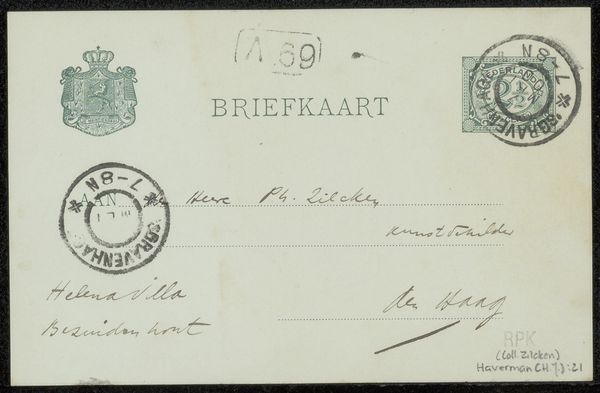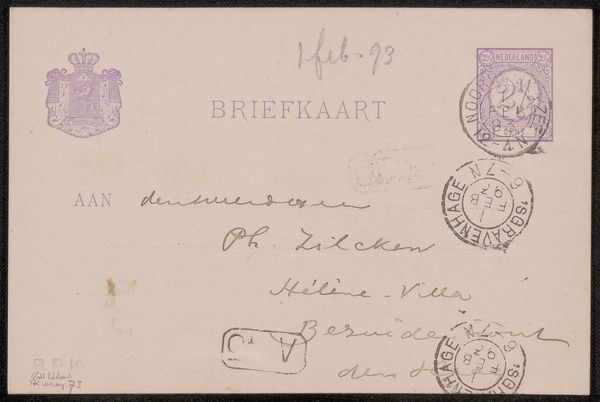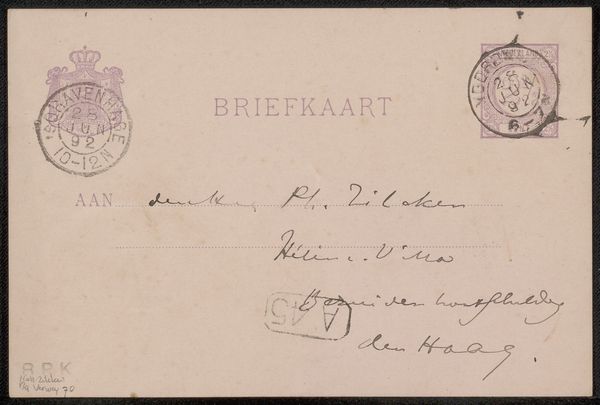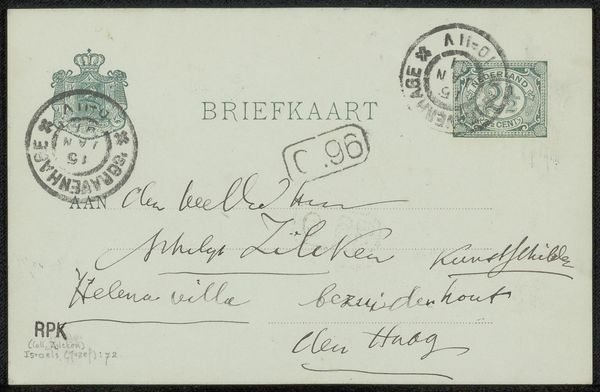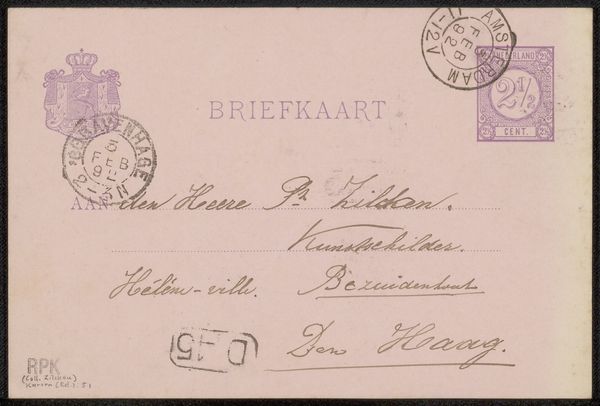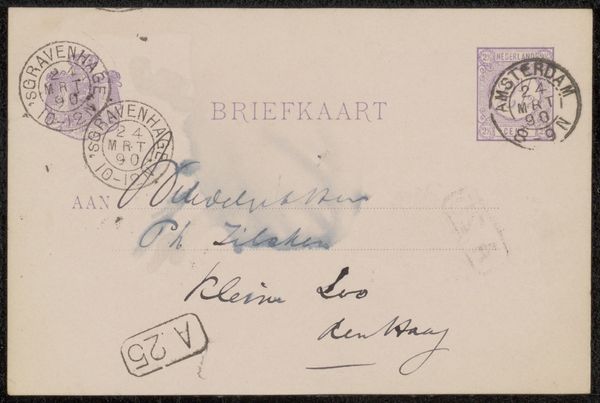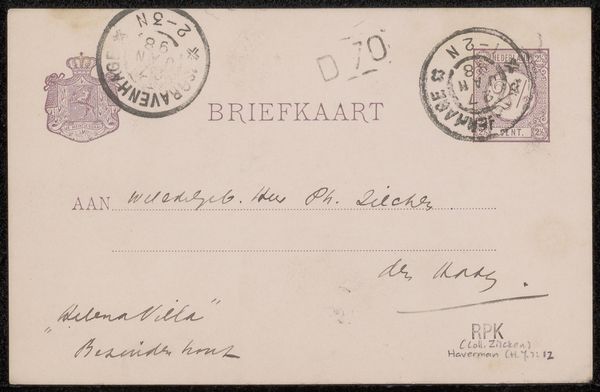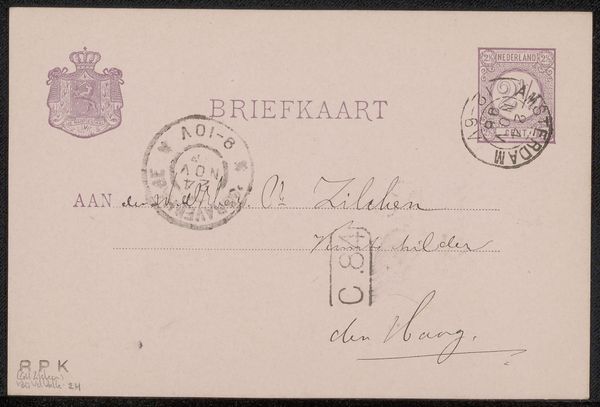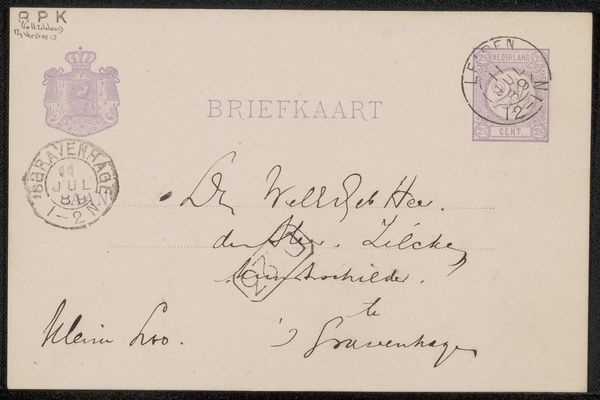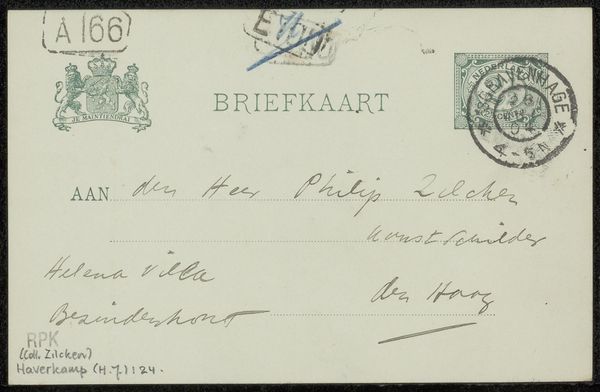
drawing, paper, ink, sculpture, pen
#
drawing
#
pen sketch
#
paper
#
ink
#
sculpture
#
pen work
#
pen
#
post-impressionism
Copyright: Rijks Museum: Open Domain
Curator: Before you, we have “Briefkaart aan Philip Zilcken” a drawing by Jan Toorop likely completed before 1904. It's ink on paper, a humble yet compelling artifact from the Rijksmuseum's collection. Editor: My immediate impression is the ephemerality of communication. It looks worn, the writing a delicate script. It feels both intimate and historical, capturing a moment in time meant for private consumption but now public record. Curator: Exactly! The postcard itself becomes a symbolic carrier. Notice the postal marks—the Dutch coat of arms and the cancelled stamp. They signify official channels, the government acting as a conduit for personal messages. These symbols legitimize the act of correspondence, adding weight to its otherwise fleeting nature. Editor: And consider the material constraints: a simple piece of cardstock, inexpensive ink, dictated the size and the level of detail achievable. Postcards facilitated mass communication but within prescribed, and arguably restrictive, parameters. There's a certain democracy there, yet also a limitation imposed by industrial processes and cost. Curator: A good point. Zilcken, the recipient, was also an artist himself. So, in this light, what hidden or subtle artistic dialogues are occurring, shielded from public view, relying solely on their shared cultural lexicon? Think about the cultural context shaping the style of Toorop's line work and its visual communication—we are catching a tiny part of a larger art world! Editor: I am drawn to thinking about what the unwritten could mean, like if they could speak on the things not said here because they might know this history too. This highlights how the consumption of material affected the production and perception of art, a dialogue extending beyond the content to encompass the very means of exchange. Curator: So, looking at this postcard makes me consider how layers of symbolism exist even within the most banal communications. Editor: It reminds me that the smallest, most ordinary objects can contain volumes about society, economy, and personal exchange.
Comments
No comments
Be the first to comment and join the conversation on the ultimate creative platform.
